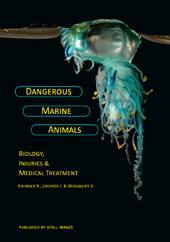Large numbers of dead fish have been washing ashore on resorts and inhabited islands in the upper north of the Maldives in Noonu and Haa Atolls, reports the Ministry of Fisheries and Agriculture.
The dead fish are overwhelmingly red-tooth trigger fish (odonus niger, locally known as vaalan rondu), but include several other species of reef fishes including Acanthurids (surgeon fish) and Serranids.
The Marine Research Centre (MRC) is currently investigating the incident.
MRC Director General Shiham Adam said a series of similar incidents were reported from June-December in 2007. Tests showed the increased presence of the bacteria Staphylococcus in the spleen of fish samples, but the investigation was inconclusive.
“We sent samples sent to the US and it seemed be related to a bacterial infection in the gills that causes them to suffocate,” Shiham explained.
“A lot of people say it is global warming and environmental change. [Fish kill incidents] are not something that normally happens, so we are worried about it,” he said.
Minute changes in the environment during critical periods of a species’ life-cycle could trigger such events, Shiham explained.

In a statement, the Fisheries Ministry noted that the Maldives lacked the capacity to deal with such large scale incidents of fish-kill, “so we have to resort to collaboration with institutes and individual parties from overseas. As such we are awaiting results from fish samples which have been sent to laboratories in India and Denmark.”
Marine biologists have also reported ‘red-tides’ in the lagoons and beaches of some resorts, which sometimes attributed to algal blooms, such as trichodesmium.
“Phytoplankton (or algal) blooms are reported to be a very common cause of fish kills around the globe,” noted the MRC’s report into the 2007 fish kill incidents.
“Controlled populations of several groups of potentially harmful algae usually belonging to the dinoflagellates) exist) in the marine environment. When conditions become favourable (nutrient enrichment of the waters, changes in physical conditions of the surrounding waters, etc) the microalgae (usually also associated with the secretion of toxins) populations burst causing mass mortalities of fish,” the report noted.
“These toxins are not necessarily always associated with fish kills, but rather the planktivores that feed on these dinoflagellates accumulate the toxins, which in turn affects higher predators (including human beings) that feeds on the toxin-accumulated fish.”
The statement from the Fisheries Ministry advised the public to not to eat the dead fish or go into murky water, as it may be potentially harmful to health.
The MRC requested that sightings of fish kill incidents and/or red tides be forwarded to MRC staff Ahmed Najeeb ([email protected]) or Faheeda Islam ([email protected]).
